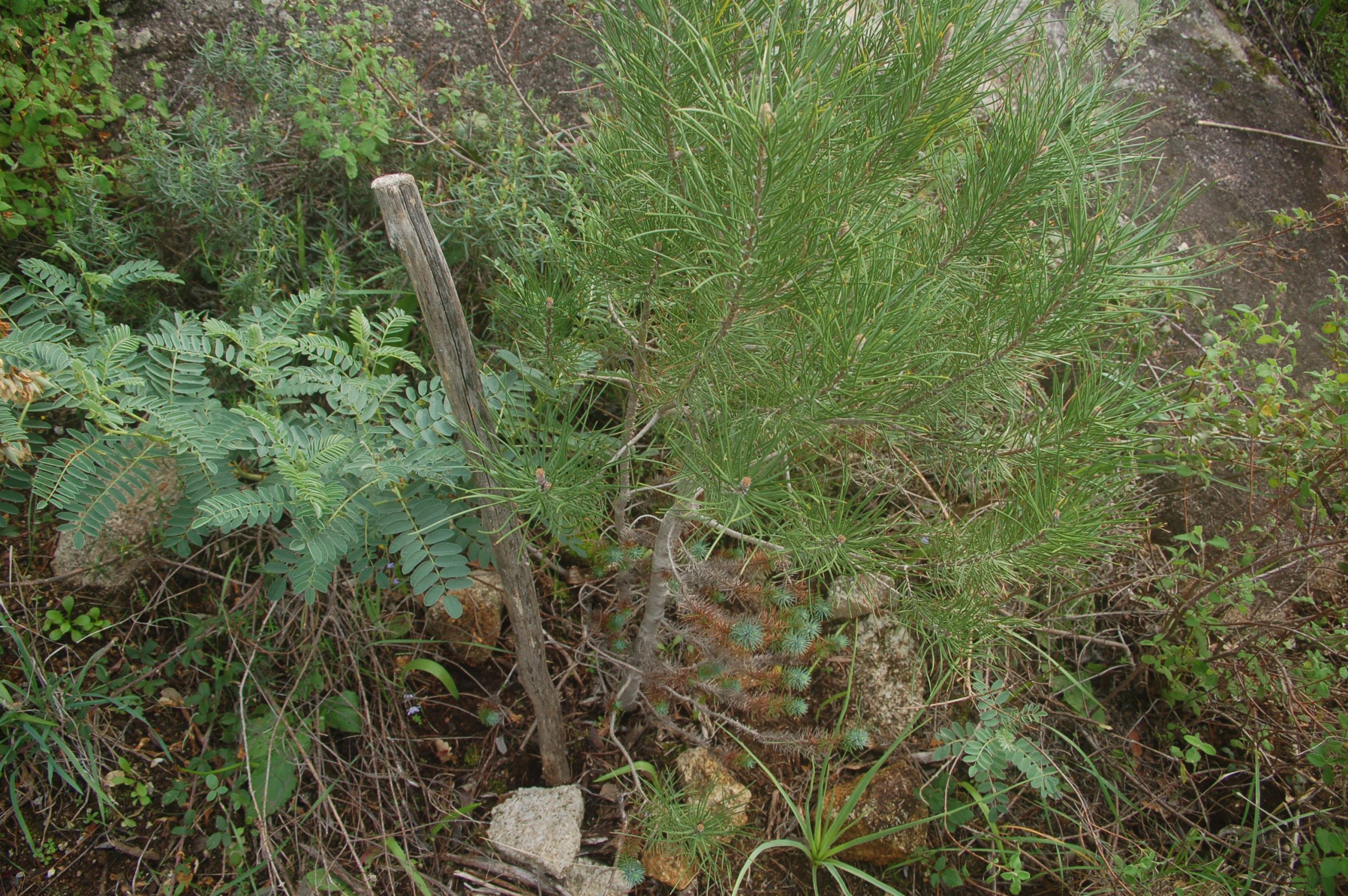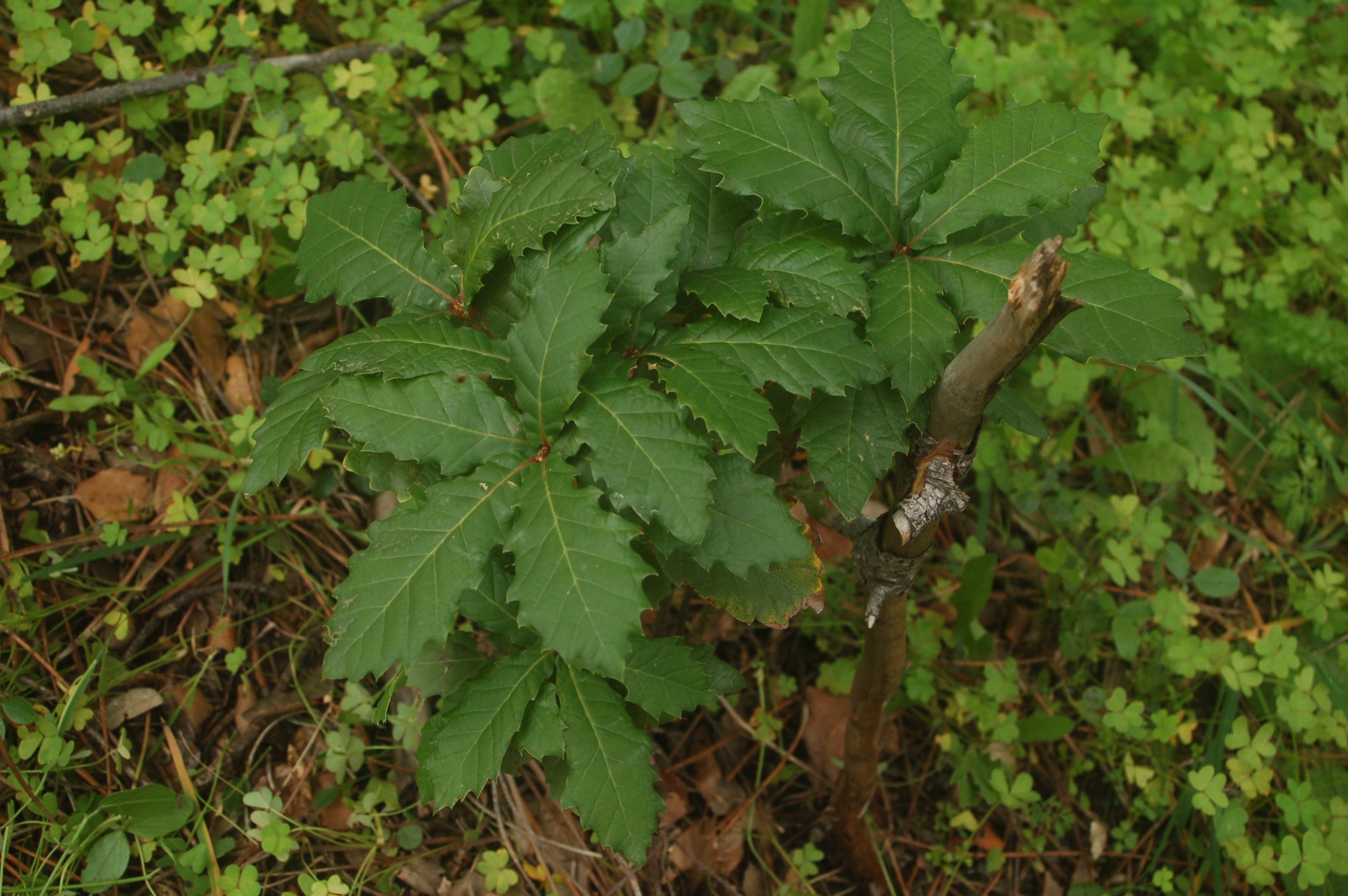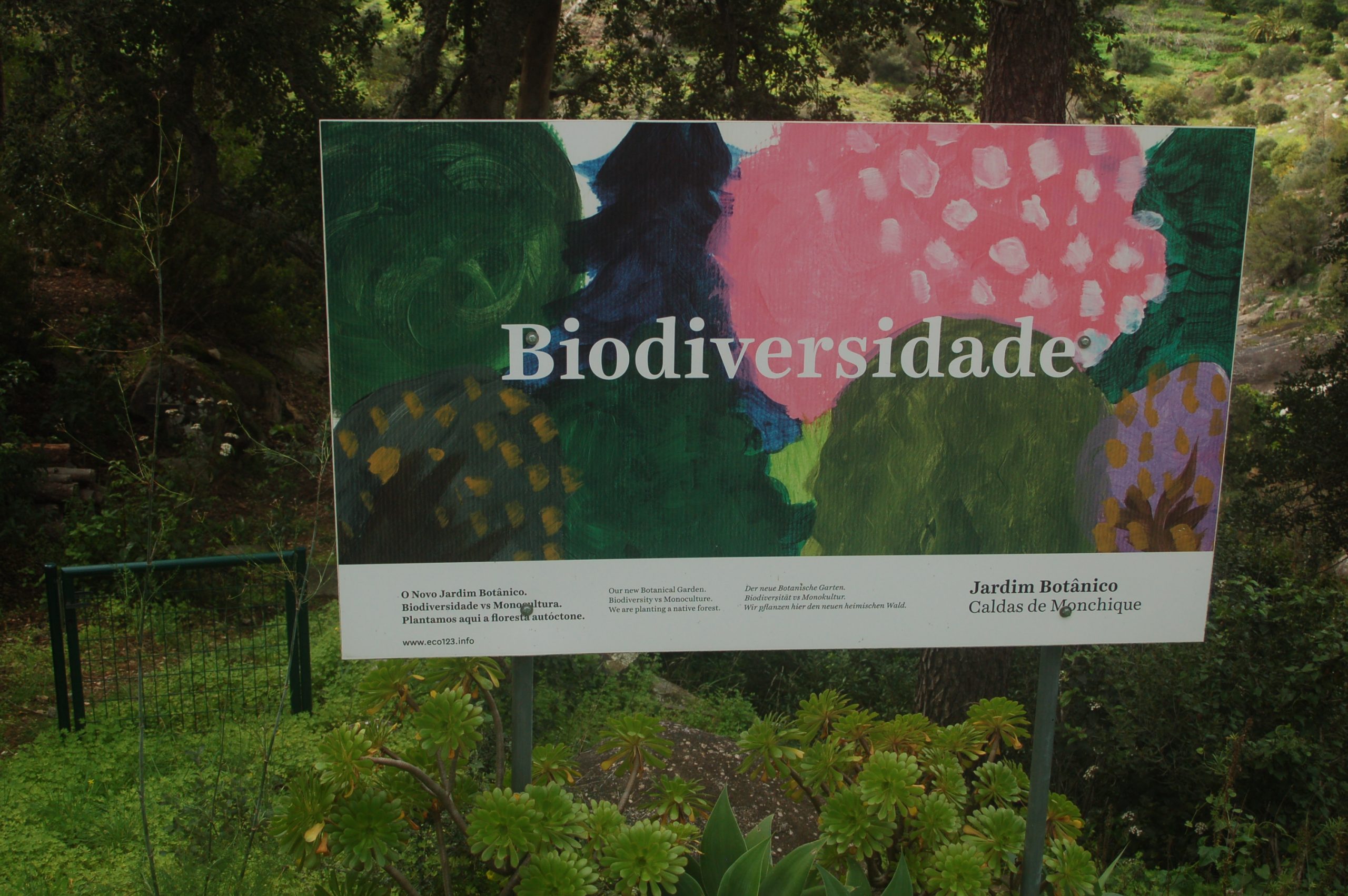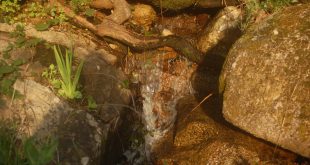Leaving the world in a better state than you found it.
The other day, a woman from a group of visitors came up to me and asked me why I was doing all this to myself. I replied that I had something to give back in my lifetime. I am a journalist and have seen so many trees turned into paper in the many years of my professional life: with every page of a newspaper I realise that the paper it is printed on was once a tree, most probably a eucalyptus tree. Surely, it is only logical that I should plant trees for the rest of my life, don’t you think? To put everything in its context, this conversation took place during a Saturday morning walk that we were enjoying through the nascent botanical forest garden of Caldas de Monchique (Portugal), in Esgravatadouro, that word you can hardly pronounce, let alone write. Here, we have planted a botanical garden, a forest garden, that is slowly beginning to take shape. Visiting time is on Saturdays at 10 a.m.
This particular visit took place on one of those beautiful sunny winter days after a week of rain. You’re happy when, instead of 57 days of non-stop rain, just like we had in 1997, it rains only for a week with a few breaks in between. Rain has become very important, because, without it, there is nothing and with too much it is the same. You’re happy for every good drop of water you receive…
We walked past a small magnolia, always keeping to the banks of the stream where the water flows down into the valley. And that’s exactly how it should be. Because in summer it sometimes happens that nothing flows at all, or, if you’re lucky, there’s a very small amount of water. I had a stick with me to lean on, which gave me support, and I explained to this small group that, if we could get the money together, we would very soon install a handrail there, like a banister on a staircase, so that nobody would have to worry about slipping and falling over. The Esgravatadouro Botanical Garden is a gully, which its former owners used to walk down every day with their donkeys, and where they engaged in traditional agriculture. In the evening, after their work was done, they would climb back up the valley, making their way home with their donkeys laden with fresh food.
Traditional farming? What is that? Let me give you an example. Someone wants to eat good potatoes or fresh vegetables, so they plant a potato in a furrow and let it grow. You can watch this happening if you have enough patience. I don’t have the patience yet. I just let myself be surprised. When I harvest my crop later, I’m always curious to see what has become of this one potato planted in the ground. Five potatoes, or just three; or even six or seven; or maybe nothing at all. It’s like a wager, or an investment. You put money on a horse and the horse starts to run. If it’s the first to gallop across the finishing line, you’ve won; otherwise, your stake is lost. Or you put your money in the bank and the bank gets rich because of you. If you’re lucky, they have invested in the right shares. It’s the same in agriculture. Investing for the good, in order to improve soil quality. The best way to start is by planting native trees, which is a good investment in nature.

I wanted to see what had become of the wonderful little umbrella pine that I had planted there three years ago. It now reaches up to waist height, looks to be in good health and is growing steadily, surrounded by weeds. The weeds consist of crested lavender and rockrose, and, in a month’s time, they’ll be joined by the wild orchid, which will flower from the end of March onwards. Before that, in the middle of winter, most of the small plants still remain dormant, and the first small trees are still slumbering. The Botanical Forest Garden is still in its early development phase and will need a few more years before the trees become fully grown. This process requires time, patience and green fingers.
All of the garden is now protected with a sprinkler system. Why do you need a sprinkler system to protect a botanical forest garden? And, come to that, why do you need a botanical garden in Monchique? People have asked me these questions too – and not just the members of visitor groups.
I know the answer immediately. We need a living museum in order to document the destruction of nature. I am not very conservative and even less of a socialist. Why? Because, in my country (and not only there), there is no difference between socialist and conservative politics. When in government, both parties are equally engaged in destroying this world into which we have been born and in which we have to live. This destruction comes in the form of forest fires. The licence that is granted to plant eucalyptus in the form of monocultures is a licence to print money. But why is this allowed to happen, when we know that eucalyptus is harmful to nature? Every few years there is a fire in Monchique. In a large area around the future botanical garden, there are huge industrial eucalyptus plantations to be found, which favour forest fires, and I thought it would be good to show people that our forest can also mean diversity. A cork oak, a carob tree, a Monchique oak, a willow and an elm that I planted here have all grown well and, when they have survived for five years, they will be given a small plaque that will tell visitors what they are called (together with their Latin names) and who planted them. Because you can also sponsor a tree. An honorary consul from Lagos planted an oak tree on 30 December 2018, and it is slowly growing. The medronho trees, which are over a hundred years old, are a good example that my neighbours like to talk about. Because you can make brandy from the berries, and that makes a lot of sense to them. But, as I can’t drink medronho, I prefer to turn my attention to other trees.
I used to have a small wooden arbour in the garden, where I had hoped to be able to sit and write stories like this one. The water from the stream flowed past a beautiful crab apple tree down into the valley – but the tree burned in the fire on 8 August 2018. I couldn’t save it because I didn’t have a sprinkler system installed at the time. 200 years of history burned, and my arbour went up in flames. But, underground, the roots began to communicate with one another, and the pomegranate tree gained a second life in the form of shoots. Every year in February, I prune the various shoots of the pomegranate bush with secateurs, so that one day I will have successfully turned the bush into a tree again…
I am not a hunter, but rather a gatherer. Sometimes I collect mushrooms, but, whenever it rains, I collect water, rainwater. And, with this collected rainwater, I will prevent forest fires in the future. I have lived in Monchique since 1990 (35 years) and have survived five forest fires since then. I have learned my lessons from this. If you have water, you can put out fires. There are many people who have turned their backs on Monchique and fled because they are simply fed up with the forest fires. Because forest fires rob young people of the chance to develop professionally, because forest fires rob people of their future and turn every dream of prosperity into a nightmare. I was close to leaving, too. I asked myself, what am I still doing here in Monchique? Watching it burn every few years? Seeing how the fires destroy nature and fuel climate change? Do I want to be part of that? NO! So, “sell the house and move away,” I told myself.
But where to? We live in a world of multiple destruction. Even Hollywood burns down every few years. In Valencia, Spain, cars have been floating away, and man- made climate change is destroying villages and towns. Not only in Spain, but also in the Ahr valley in Germany, cars can be seen floating in streams after heavy rainfall. You don’t overcome climate crises by moving house. And so, after much thought, I decided to plant a diverse botanical forest garden in order to counteract the eucalyptus plantations and forest fires, and I protected this garden with a powerful sprinkler system. I built a firewall around my house and took care not to use flammable materials while doing so…
We humans (and animals too, of course) are capable of evolving, adapting, becoming resilient and perhaps doing some good in the process. I have decided to leave my little world in a better state compared to how it was when I found it. Not worse. I am entering my final years with this goal in mind. It must be feasible to make my world a little better. And that includes planting trees to create new forests.
Trees provide shade, while transforming CO2 into oxygen; forests are an important part of nature, protecting the water balance and the earth – in short, our health. Forests are colourful, and every season a different colour dominates my little world in Esgravatadouro…
Forests are not just green and not just dark. In my forest, I see blossoms on the trees in the most beautiful colours, and later in the year I can also enjoy the fruit that it gives me. I have a laurel tree that makes my food tastier with its leaves, a lime tree that provides me with lime blossom tea, as well as a tree that has just bloomed with white flowers and will later give me almonds – and a walnut tree that gives me walnuts, a pepper tree and carob trees whose pods I grind into flour for hot chocolate. When it’s June again, I go to my apricot tree and see if and when I can pick these wonderful fruits. (Normally around the tenth of June.) And I haven’t even begun to talk excitedly about my lemons, oranges, grapefruits and mandarins… My world is a world of reciprocity: a constant process of give and take.
With this in mind, the Esgravatadouro cooperative is organising a workshop on permaculture at the end of March, for people who want to know more about how they can produce their healthy food. Visit Esgravatadouro and take part in this unique seminar…
 Eco123 Revista da Economia e Ecologia
Eco123 Revista da Economia e Ecologia



